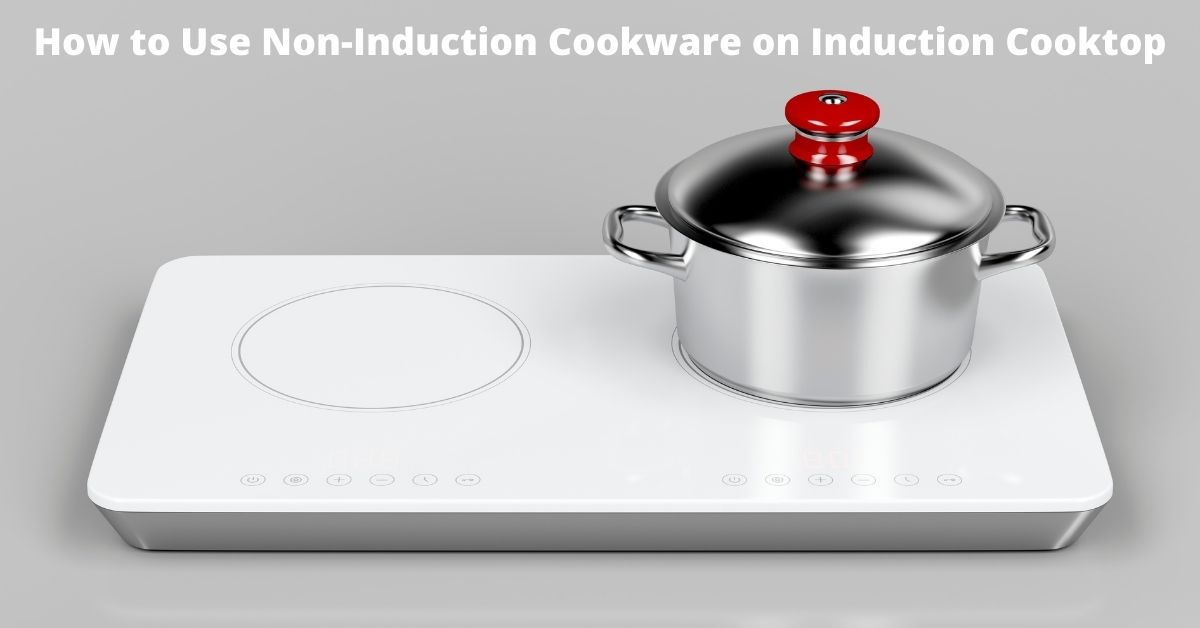by Christopher Jones
Induction is the raging technology of the modern age that took the art of cooking to a whole new level. It’s a more efficient method of cooking meals, which takes less effort and wastes little time. This is a far better alternative to using gas or electric stoves, but you can’t just use any cookware to cook on an induction cooktop.
They require special cookware that is magnetically conductive and has ferromagnetic properties. If you’re one of those who want to use an induction cooktop without spending money on some extra cookware, fret no more. Regular cookware can be made induction-ready, and we’ll show you how.
Contents

You might be wondering why induction cooktops have such strict requirements. That’s because induction cooktops produce heat with the help of a scientific phenomenon called electromagnetism. Each of these cooktops is equipped with a coil that sits right beneath the cookware.
When a certain voltage of alternating current is passed through the wire to the coils, it creates a magnetic field. The magnetic field surrounds the cooktop and also appears above the surface. Thus, when you place magnetically conductive cookware on its surface, the magnetic field penetrates it.

Due to this a strong resistive electric current constantly flows through the cookware. This eventually produces friction which generates the heat needed for cooking food. However, you will need flat, magnetic, and smooth cookware to be able to cook on such appliances.
Without the proper utensils, the current won’t be generated and the cooktop would be of no use. To check if your existing cookware is suitable for this method, simply place a magnet near the bottom to see if it sticks. Utensils made of stainless steel and cast ironare ideal for induction cooking.
Likewise, copper, aluminium, and glass aren’t recommended as the magnetic field can’t pass through them. This is a unique cooking method because the cookware becomes a source of heat. Therefore, it’s crucial to choose the right utensils for this job. The cookware should also be identical to the diameter of the cooktop.
We also know that buying a whole new set of cookware for induction cooktop won’t be easy on your pockets.
Fortunately, there are a few methods to make your cookware induction-ready without the added expense.
Netted steel can often be noticed on windows and doors in your house. If you don’t find one at home, you can easily buy netted steel from your nearby hardware store. This a unique way of making cookware induction-ready, but it often does the trick.
The process includes folding a sheet of netted steel and strategically placing it on the cooktop surface. After putting the non-induction cookware on top of this sheet, turn on the cooktop. This might take a while but the magnetic current passes through the steel, and gradually heats up the vessel.
Keep in mind that this is not a fully tested method, which probably has some risks involved. As we already discussed, induction cooktops generate heat due to electromagnetism. The magnetic current is induced in a closed circuit with the help of alternating current from another source nearby.
As a result, if you choose to implement this method, you should heavily rely on personal safety precautions. Don’t forget to turn off the cooktop before removing the cookware and the netted steel. The net might store a lot of heat even after the cooktop is turned off. So, consider using oven mitts.
A converter disk is arguably the best option for passing induction heat through non-induction cookware. It’s a flat, disc-shaped object that allows you to use almost any cookware on an induction cooktop. They are usually made of durable materials that are also magnetically conductive – steel or iron.
Don’t be fooled by its slim shape as a converter disk can be pretty heavy. Accidentally dropping such a heavy object on your feet can be pretty painful. Thankfully, its incredibly thin shape reduces the chances of that happening.
Apart from that, converter disks are highly conductive and can generate large amounts of heat. They are also good at distributing the heat evenly throughout the non-induction cookware. However, not all converter disks are of the same quality.
You should carefully pick a model that’s made of high-quality materials. A smooth ergonomic heat-proof handle is also something you should look out for.
Despite the numerous features of a converter disc, it also comes with a few disadvantages. You already know how the disc absorbs magnetic waves from the cooktop and transfers it to the non-induction cookware. This might seem like placing cookware directly on the induction cooktop.
However, that’s not always the case. Regular cookware doesn’t always have smooth bottoms. Dents and jagged edges form at the bottom of the cookware due to repeated use. When you place cookware on top of a converter disc, the uneven edges are filled with air pockets.
Air reduces the conductivity of the utensils. The converter tries to transfer the heat generated by the magnetic field to the cookware. Unfortunately, the air pockets tend to slow down the heat transfer. If not enough heat is generated, you might end up with undercooked food.
At the same time, the converter disc keeps absorbing all the heat from the cooktop but not enough of it is transferred. This leads to the disc building up more heat than the bottom of the cookware. As the heat can’t reach the non-induction cookware, most of it gets transferred to the ceramics below. The rest of it escapes into the kitchen air.
Several studies have been conducted to compare the heating capacities of induction cooktops with and without a converter disc. Water was boiled directly using induction-ready cookware on an induction cooktop. On the other hand, the same method was applied using a converter disc and regular cookware.
Results showed that it took about 8 minutes for the induction-ready cookware to boil 8 cups of water. Surprisingly enough, the one with the converter disc took roughly 19 minutes to boil the same amount.
Besides that, 10 minutes and 30 seconds after using a converter plate, the power generated by the induction cooktop started fluctuating. This proved that the excessive heat stored in the converter had significantly damaged the insulation layer and even the coil below.
The aforementioned methods will prove effective if you want to use regular cookware to cook on an induction cooktop. Even though it’s not as effective as using induction-ready cookware, you will achieve satisfactory results. Beware not to touch the induction cooktop or the cookware with your bare hands.
 |
 |
 |
 |
 |
 |
 |
 |

About Christopher Jones
Chris is a true globetrotter. He has been to many destinations and tried different types of food from all over the world, yet he still loves finding new places and tasting their specialties. Chris has always had an entrepreneurial spirit and so he decided to go back to school at age 24 for his MBA at University of San Francisco so that he could have a better understanding of business strategy in order to start his own company. His favorite motto is “how can one live well, travel well, and work well without having good food every time?”
Kitchen Goodness
Check for FREE Gifts. Or get our Free Cookbooks right now.
Disable the Ad Block to reveal all the recipes. Once done that, click on any button below
 |
 |
 |
 |